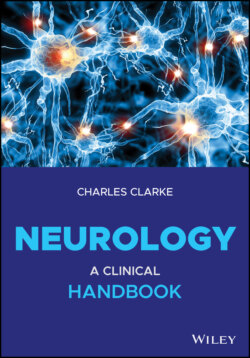Читать книгу Neurology - Charles H. Clarke - Страница 168
Temporal Lobes
ОглавлениеMany small (<2 cm) unilateral temporal lesions are silent. Epilepsy is common (Chapter 8). Upper quadrantic hemianopia is seen when the forward‐looping fibres (Meyer’s loop) are damaged. A lesion in the posterior dominant anterior temporal lobe can cause a posterior (Wernicke) aphasia (Chapter 5), or much less commonly, and usually when bilateral, word deafness, that is inability to understand speech, caused by damage to auditory areas in or near Heschl’s gyrus.
Non‐dominant anterior temporal lobe lesions are sometimes associated with inability to recognise faces (prosopagnosia). Unilateral mesial temporal lobe lesions can also produce subtle changes in memory, more marked for verbal material in the dominant, and faces and topographical features in the non‐dominant hemisphere.
Bilateral temporal lobe lesions, such as post‐herpes simplex encephalitis can cause profound memory loss for recent events. Bilateral damage in primates can cause hypersexuality, hyperphagia, and aggression (Klüver–Bucy syndrome). Sometimes, elements of this occur in Man, such as temper dyscontrol, but the usual outcome is amnesia and aimlessness.
